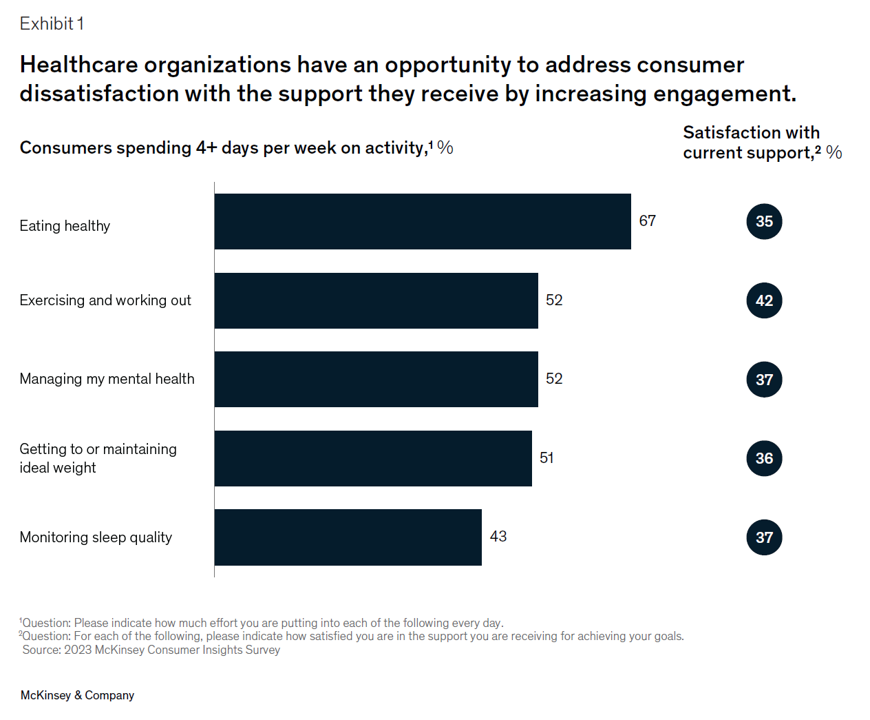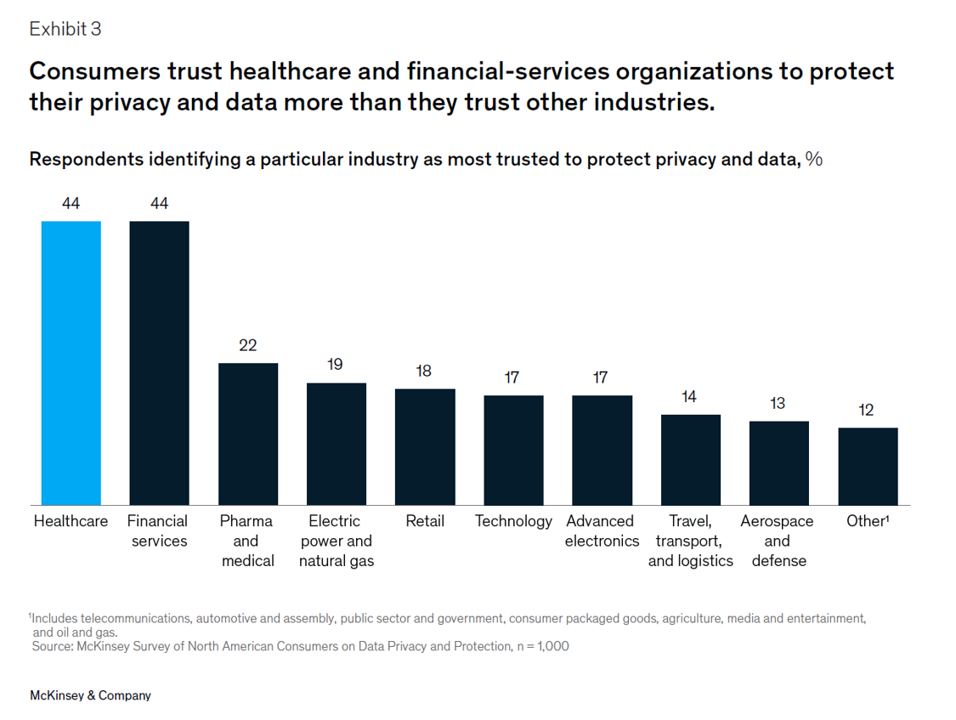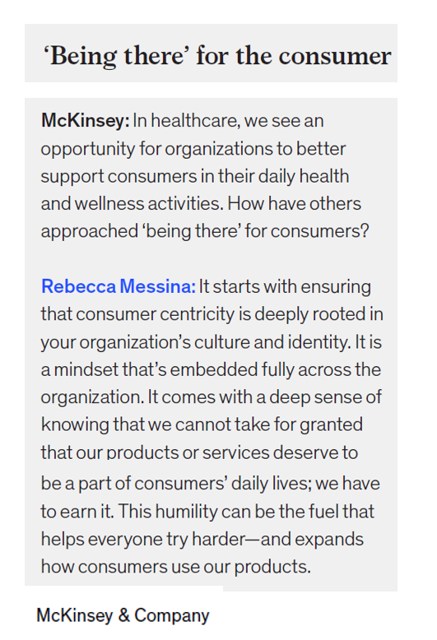Three trends underpin health consumers’ evolving demands for service: spending more but getting less satisfaction and innovation; trusting health care with data but underwhelmed by the use of that personal information; and, growing “shopping” behavior seeking quality, availability, proximity, cost, and options across channels for health care.
That’s the current read from McKinsey & Company’s team noting that Consumers rule: Driving healthcare growth with a consumer-led strategy.
In this health consumer update, McKinsey spoke with three consumer marketing experts from other industries to learn best practices on how best to “be there” for consumers — in other words, meeting people where they are.
The first bar chart from the report tells us that most U.S. consumers are undertaking several health behaviors — but far too few deriving satisfaction with the industry’s support of these healthy behaviors (shown in the right-hand circles).
More than one-in-two consumers are eating healthy, exercising and working out, managing mental health, and getting to an ideal weight rank top in consumers allocating at least four days a week — but less than 40% of people feel satisfied with the support health care organizations are giving them in these activities.
Industries leading the pack for digital adoption and innovation are banking, telecomms, entertainment, and surprisingly insurance and utilities are ahead of the pack versus health care and apparel @ retail. 
We’ve been addressing the importance of trust in health care here in Health Populi, and McKinsey points to trust in health care as Trend #2 — with consumers recognizing that the industry has been under-using their personal information.
As the second bar chart clear says, consumers are most likely to trust health care and financial services companies to protect the privacy of their data, noted by 44% of consumers…with pharma and medical entities half that rate (22 % trusted the sector).
Even with that trust and permission structure, consumers say that the health care industry comes up very short in terms of personalization and full employing that data people have been willing to share. Here, McKinsey recommends innovating patient access on-ramps thinking about an end-to-end transformation mindset — personalizing engagement with consumers from scheduling appointments and recommending appropriate care settings for those encounters to customizing outreach for chronic care management. This would be powered by integrated data, analytics, and technology platforms that would support a holistic view of consumers across channels, apps, and “moments,” in the words of Christiana Smith Shi, one of McKinsey’s subject matter experts. 
Health Populi’s Hot Points: Generally speaking, products and services have to “earn” their way into consumers’ lives. This requires a level of humility by organizations serving up those products and services, Rebecca Messina, another one of McKinsey’s advisors, explained in the report.
For the health care industry, that’s complicated by the fact that not all health care products and services are “shoppable,” with many having access barriers to a patient’s voting with their feet or pocketbook — namely,
- Products or services requiring a prescription from a licensed professional,
- Products or services that are not pre-authorized by health plans for that patient’s use, and/or
- Products or services whose out-of-pocket costs to the patient-consumer are beyond their ability to pay.
For these access barriers, there are various kinds of friction people face that organizations can anticipate and risk-manage along the patient journey. Here’s where the kind of marketing savvy, UX design, and AI skills honed in industries like banking, telecomms, entertainment, and retail can help the lagging health care industry support “consumers ruling” their own health care to the possible full extent.




 Thanks to Feedspot for naming this blog, Health Populi, as a
Thanks to Feedspot for naming this blog, Health Populi, as a